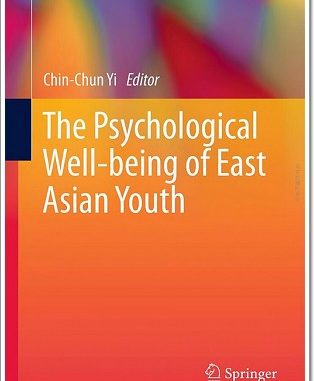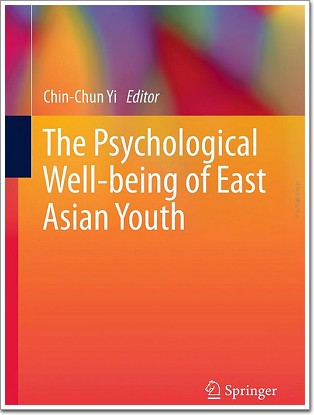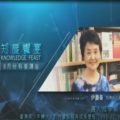
東亞青少年的幸福健康狀態
Quality of Life in Asia © 2013
Editors: Yi, Chin-Chun (Ed.)
伊慶春(中央研究院專任研究員)
原文出版社:Springer
出版日期:2012.10.12
語言:英文
This book offers comprehensive information on the diverse growth trajectory of East Asian Youth in a rapidly changing context
這本書全面地呈現了在快速變化的社會環境中,東亞青少年成長軌跡的多樣性。
簡介:
東亞社會的急劇變遷,使得家庭、教育和政治影響等議題引起了研究者們極大的關注。受傳統與現代價值觀及行爲的雙重影響,與上一代人相比,下一代人成長在一個截然不同的社會環境中。本書以台灣青少年作爲東亞地區的代表,描繪了他們發展過程的全貌。本書的研究對象是處於青春期前期(13 歲)至成年期初期(22 歲)的青少年。在這個重要的人生轉變期,個人心理幸福健康狀態從廣義上來說可以被用來當作反映青少年重要發展進程的成果指標。
根據 2000 至 2009 年進行的追蹤研究之數據,本書主要聚焦在兩個方面:一方面是探討個人的成長模式如何受到家庭、學校與社區的交互影響;另一方面則強調了東亞地區盛行的社會規範和價值在個人成長歷程中所造成的潛在限制和 / 或具備的優勢。具體而言,本書將以不同的章節描述和分析擁有不同社會資本(例如家庭社會經濟地位、學業成就以及城鄉居住環境等)之青少年的人生機遇和成長模式。研究之短期與長期的結果將通過若干描述心理幸福健康狀態的變量(例如憂鬱症狀、偏差或問題行爲、幸福感、學業表現)呈現出來,從中我們可以勾畫出東亞青少年在成長過程中所面臨之獨特的結構性社會環境。基於科學證據,我們還可以對家庭互動、教育策略及公共健康政策提出有效的建議。
本書同時也涵蓋了其他東亞社會相關報告以及澳大利亞和美國青少年之追蹤研究成果。生長在已開發國家之青少年的成長經驗將有助於讀者進行對照,從而更好地理解東亞青少年的成長歷程是如何植根於一種特有的社會情境當中。此外,採用比較的方式可以使讀者進一步思考這個地區富裕的下一代未來潛在的發展趨勢。
過去幾十年中,東亞社會結構不斷變遷,而針對家庭、教育和社區的研究則相對不足,本書的内容及時地填補了這一空白。經由分析及呈現這些從青春期前期至成年期初期、極具價值的研究數據和成果,本書希望可以吸引那些對家庭研究、青少年研究、追蹤研究以及台灣和東亞社會發展研究有興趣之人投身於這些領域的研究。
About this book:
The rapid social change in the East Asia has brought great research attention on the family, education and political impacts. The growth trajectory of the next generation is exposed to an entirely different context owing to the dual effects of traditional and modern values as well as practices. This book provides an overall picture of the developmental trajectory of Taiwanese youth as a typical example in the region. The time frame is set from early adolescence ( 13 years old ) to young adulthood ( 22 yeard old ) . Individual psychological well-being in its broad definition will be used as the outcome indicator to reflect significant developmental processes during this important transitional life course.
Benefitted from the rare panel datasets conducted from 2000-2009, this book has two major focuses: one is to explore the interplay among family, school and community with regard to their influence on the individual growth patterns; the other is to highlight the potential constraint and / or strength of the prevailing social norms and values shared among East Asian societies. To be specific, different chapters will describe and analyze the life chances and growth patterns among youth with different social capitals ( including family SES, educational achievement, rural-urban residence, etc. ). Their short-term versus long-term outcome, as indicated by various psychological well-being variables ( e.g., depressive symptoms, deviant or problem behaviors, happiness, edutional performance ) , will allow us to delineate the particular structural context that individual East Asian youth encounters and to offer constructive suggestions on family interaction, educational strategy as well as health related policies based on the scientific evidence.
This book incorporates comparative reports from other East Asian societies, and from youth panel studies of Australia and the U.S.. The experience of their counter-part in the advanced societies will contribute to readers’ understanding of the particular social situation that East Asian youth is embedded in the growth process. In addition, comparative perspective will enable the reader to contemplate on the potential future development of the affluent generation in the region.
Since changing social structure occurred in the last few decades in the East Asia has suffered inadequate investigation in the realm of family, education and community, this book provides timely information to fill up the gap. Analyses of the valuable dataset from early adolescents to young adults will attract those who are interested in family researches, in youth studies, in panel data analyses, as well as in the social development in Taiwan and in East Asia.


(含教學原則與真實案例)-2-1-120x120.jpg)
-2-120x120.jpg)

